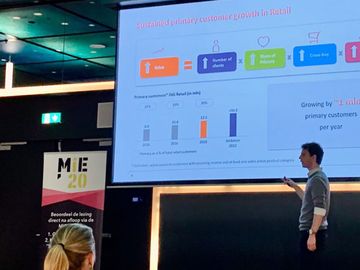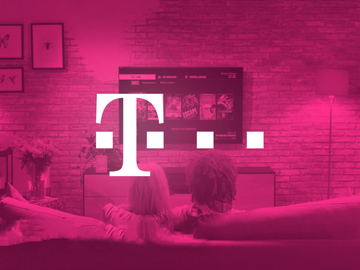
Want to create the very best website in your market? Think outside out
Putting the customer first has been the motto for online marketers for years. By really getting to know and understanding your target group, you can optimally tailor your messaging to have the most impact. However, the interaction with your brand is only part of how your target group perceives you. On top of this, your competitors are trying just as hard to optimize their interactions. How do you make your website the very best for your customers?
With the advent of the internet, a new type of consumer has emerged: one that proactively searches for information, compares solutions, and shops online. In order to optimally serve this modern consumer, as a brand you must offer an enjoyable customer experience. By doing this across all channels you can prove that you understand your customer best, and that they’ve come to the right place.
With this perspective, most companies have replaced the inside-out approach with an outside-in approach. The organization (inside) is no longer catering to their view of the market (outside), but the other way around. The needs and perspective of the customer come first, and companies must meet this in every way. In a competitive playing field, this leads to better results – but only to a certain extent.

Putting the customer first is not enough
As an online marketer, you deliver tight reports with rising graphs and green check marks. The number of visitors increases month after month, just like the time-spent-on-site and the page views of your product pages. But the conversion is declining, and more and more consumers end up not buying from you. You don’t understand exactly how this is happening. How can there be no revenue growth?
Your online marketing seems optimally tailored to your target group. To do this, you look at the click behavior on the website, and you regularly conduct a survey. You leverage focus groups, feedback forms and conversations with your diehard fans and promoters. You know exactly who your visitors are and what they want. All of that has certainly helped you get to where you are today, but it’s not enough anymore if you want to be the very best in your market.
Your competitors are just as important to your customer
Consumers are spending more and more time on their smartphones and various digital channels, according to the Digital 2023 Overview Report from We Are Social and Meltwater. That makes it easier for brands to reach consumers 1-on-1, but there is also much more noise to compete with.
The challenge is to cut through that noise and build a personal relationship with the consumer. But that’s just where it starts. Satisfied customers also continue to look for better services or cheaper products. To understand why your customer ultimately chooses you or not, you will also have to look at your competitors.
At the moment, many people believe that you should ignore your competition: that leads to copying behavior and it is deadly for your innovation. But, in the end, it’s not about what customers think of you or your competition.
What matters is what customers think of your brand, compared to the competition. That perspective is called outside-out.
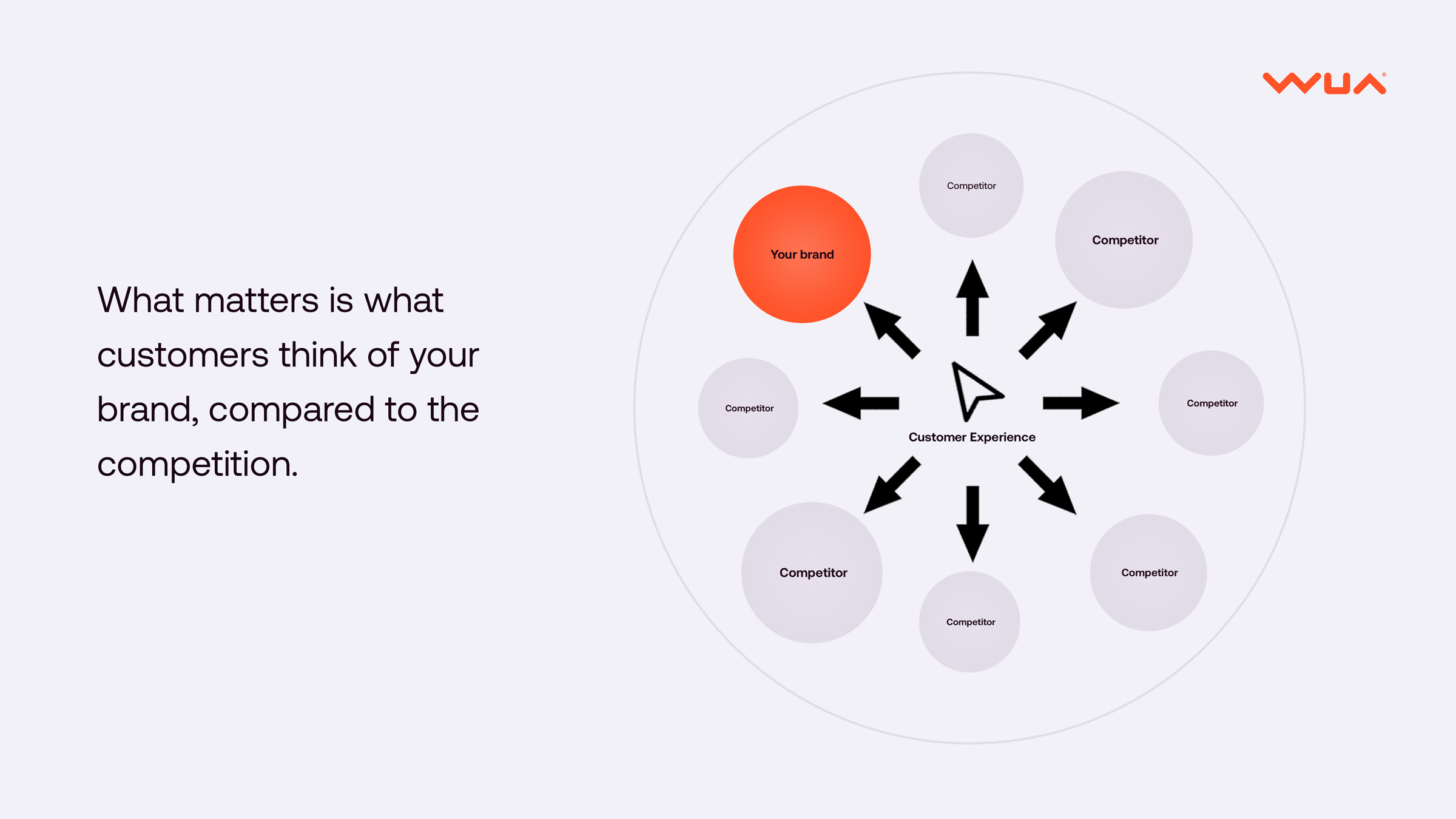
Look outside-out: compare your results with those of your direct competitors
Outside-out is about looking at what customers, based on their needs, experience on competitor websites and how that compares to their experience on your website. This way you keep the focus sharp on the customer experience, which is particularly useful in case of disappointing results.
Online marketers generally try to compare findings with previous results from the distant or recent past. But if you don’t find a clear reason for behavior in your offer or the customer relationship, you must look beyond that.
How has your offer changed compared to others? Does a competitor have a promotional campaign with hefty discounts? Do they offer better and more complete product descriptions? Quick filter options? Or a new handy tool with which the customer immediately finds the right product?
These are typical outside-out issues that can have a major impact on your results, but often go unnoticed.

In a market with constant competition, every battle for the customer counts, especially when they have high expectations. As a result, there is a high pressure to keep performing and increase the conversion rate. In that battle, a conversion rate of 3% is considered a good score. But what if you turn that around?
Aiming for the other 97%
Most online marketers only look at their current conversion rate, and then work to optimize it. However, potential customers are orienting themselves on your competitors’ websites too.
With an average conversion of 3%, the other 97% is being ignored – and that is where the real growth potential lies.
Why don’t those 97% buy from you? What percentage actually buys from your competitor, and why? Answer these questions, and you will know how to turn this significant group into customers as well.
While conversions are the desired outcome of a great customer experience, they are not the most important thing for brands. A conversion rate denotes only the volume of transactions versus the traffic. This metric gives you no insight into customer satisfaction or the way the customer navigated through the customer journey.
The goal of every brand should be to create digital experiences that make customers leave your app, site or webshop happier than when they arrived. When this is successful, customers feel less of a need to look at the competition. As a brand, you must find a way to measure your customer experience compared to the competition.
Only then can you positively distinguish yourself in the market as a leader.
There can only be one winner
The best method to compare the digital experience of different brands is benchmarking. The WUA benchmark data shows that the very best website is chosen, on average, 44% more often than the number two. This also means they capture a market share that is, on average, 44% larger. The difference between the #2 ranking and #3 is about the same. And whoever falls outside the top three is left with only the last pitiful crumbs from this potential feast.
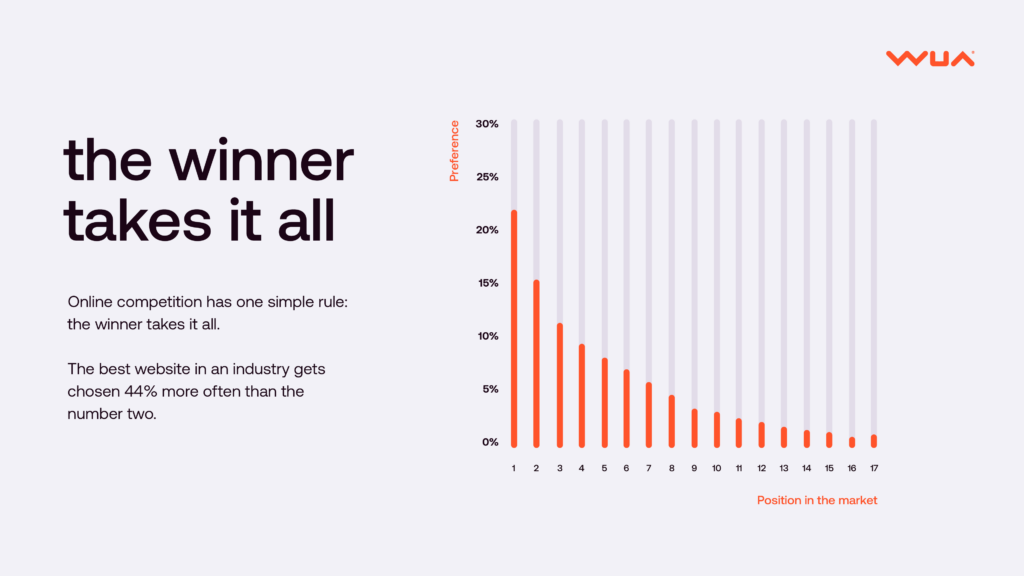
Currently, concepts such as conversion rate, page views and customer preference are generally compartmentalized. You still don’t learn exactly what you must improve in your online marketing to leave your competition far behind.
Benchmarking customer experience at each step of the journey
In the WUA benchmark, we divide the customer journey into three stages and measure how each part is progressing. In the model below, the first step is the findability of your website and the last step is the final transaction. Everything in between is the customer experience (CX) on your website. This is where you build the customer relationship and convince the visitor to buy from you.
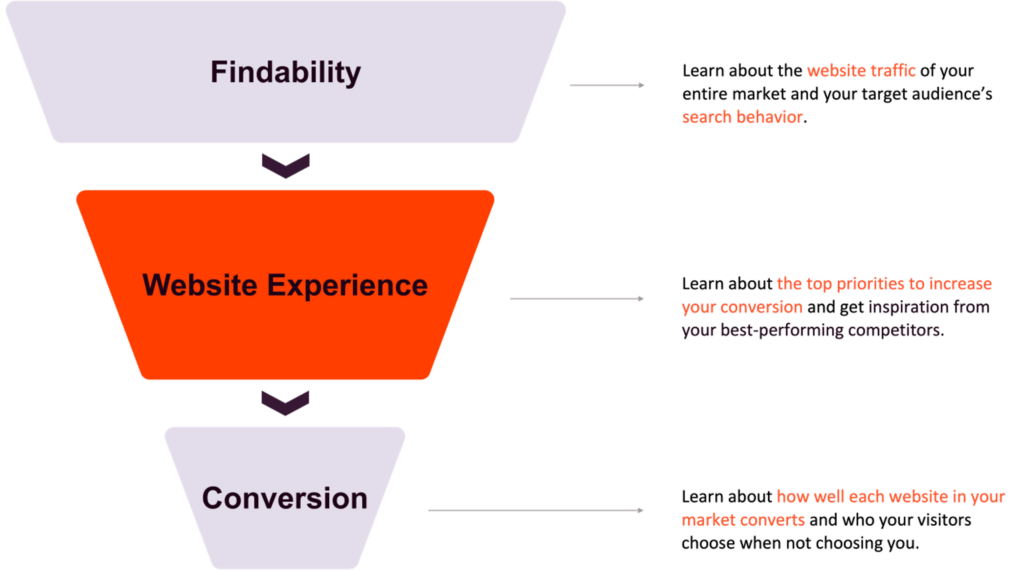
By letting potential buyers make this journey in a free orientation and measuring their experiences at competing sites, a detailed benchmark is created. With this benchmark you learn exactly what a customer experiences with your competitor and why they may choose them instead. Will they find what they want faster? Is it more successful in convincing the visitor? Is it easier to make the purchase?
By uncovering these aspects of the experience, you learn which points in the customer journey you need to improve to increase your conversion at the end. This way you can set ambitious goals that you achieve in manageable steps.
By regularly measuring where you stand compared to your competition, you make progressively better optimizations at each stage, and your website becomes the very best for your customers as a result.
Start benchmarking today
See exactly where you stand compared against the competition, and guide your conversion optimization efforts with clear priorities.
